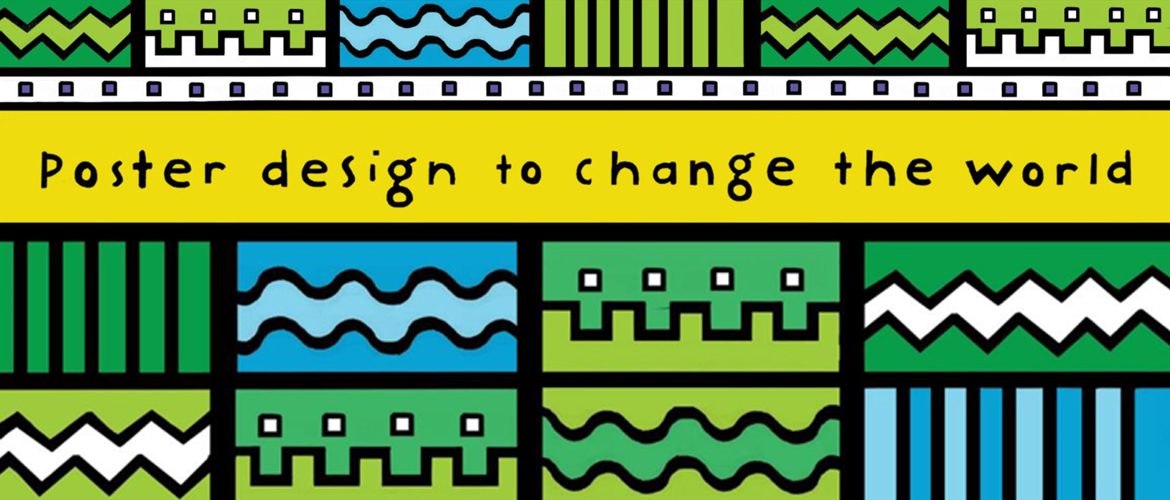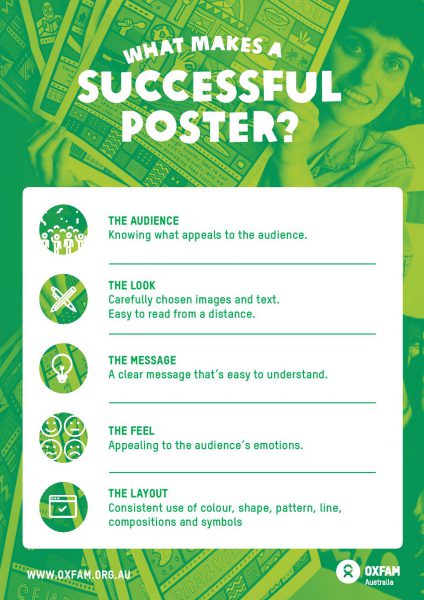Section 1 Part 1: Graphic design and posters
Activity 1: What do you know about posters?
Download the “Look, See, Do” worksheet.
Answer the following questions and record your answers in the correct sections of the worksheet:

- What do posters look like? (Look)
- What are some of the common features? (Look)
- What should a poster do? (Do)
- Why might a company make a poster? (Do)
- Who might see a poster? (See)
- Are some posters made for specific audiences? (See)
Next, list any posters that you have seen in the school grounds or on the way to school.
Look at the examples of school posters your teacher will show you.
In pairs, discuss the sample posters in terms of how they look (think about the images and text: is it easy to read, colourful, using shapes and lines etc.), what they do (is the message clear?) and also who their intended audience might be — who will seethe poster (how does the poster try to get the audience’s attention? How does it appeal to the audience?).
Check out the infographic below for ideas about what makes a successful poster:
Activity 2: What is a graphic designer?
Step 1: In pairs, discuss what a designer is. Can you think of any different kinds of designers?
A graphic designer creates the look of text and images on posters, in advertisements, magazines, books and on computer screens. To do this, a graphic designer uses colours, images, patterns and shapes to make the message clear and also more interesting to the viewer.
A good graphic designer can take some plain printed text and change that so that the text and images, colour and pictures capture your attention and engage you.
Step 2: Look at this example of the ‘Right to be Heard’ goal as text, and then as a graphic designed poster:


Which one do you prefer and why? Write your answers in your design diary.
Activity 3 (extension activity):
Look at the sayings below, or come up with your own.
Imagine you are a graphic designer. Your mission is to create a poster that gets across the text meaning in a visually engaging manner.
Consider your use of typography, images, colours, shapes, scale, patterns, tone and so on, as you design and create your poster.
Use the following sayings as examples:

- It’s raining cats and dogs
- Actions speak louder than words
- Barking up the wrong tree
- Feeling under the weather
- Heard it on the grapevine
- That’s a piece of cake
- Let sleeping dogs lie
- Don’t steal my thunder

